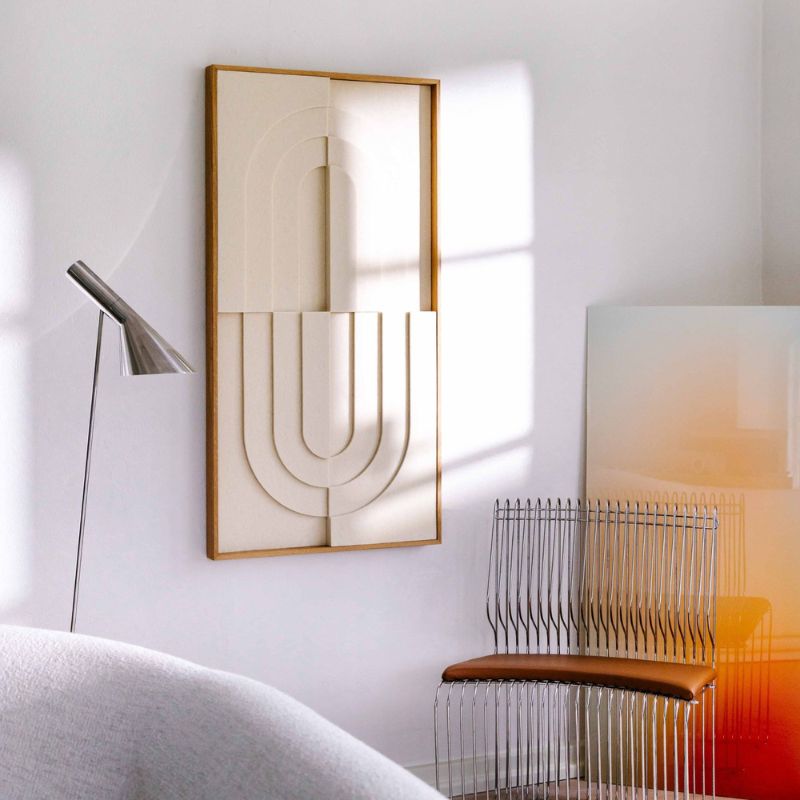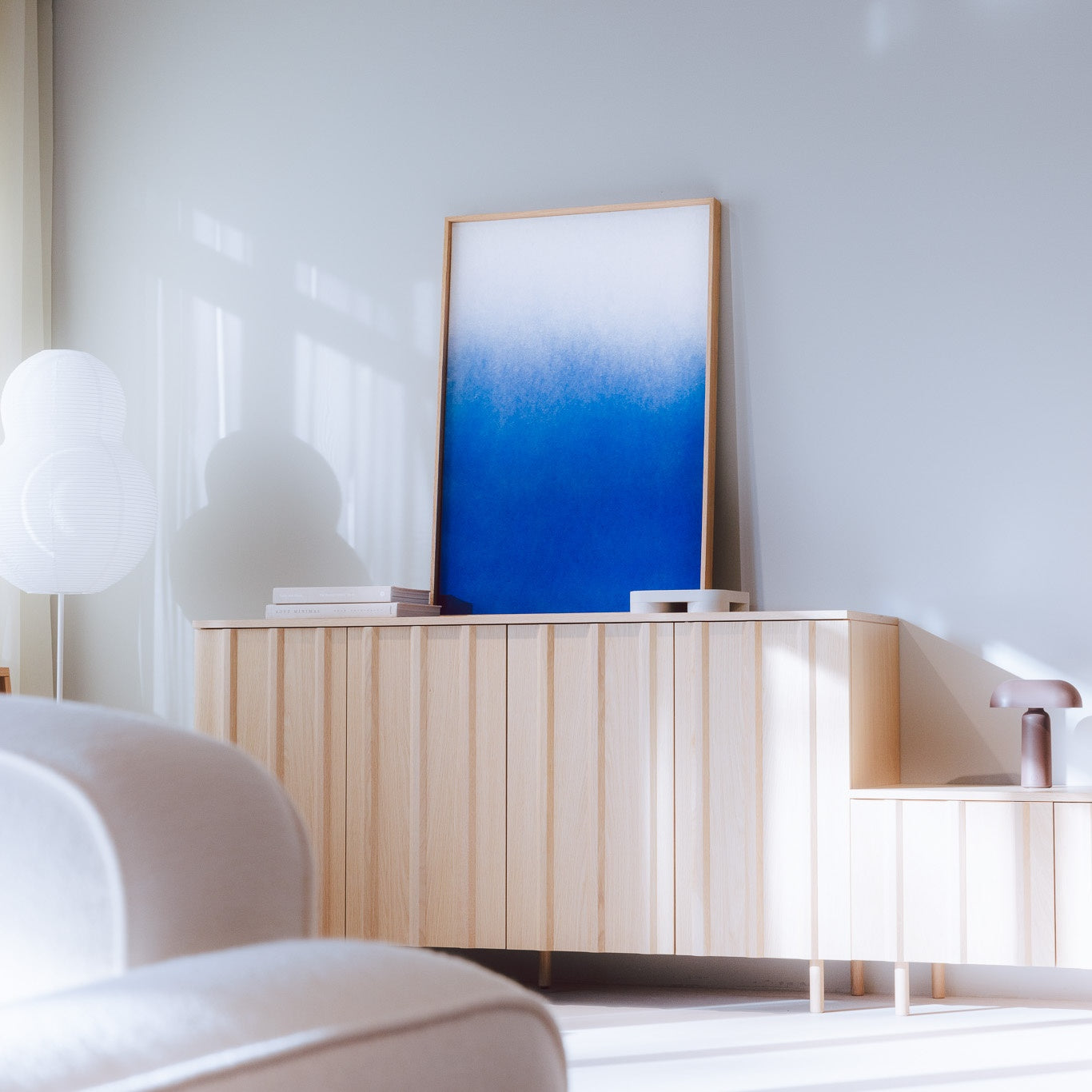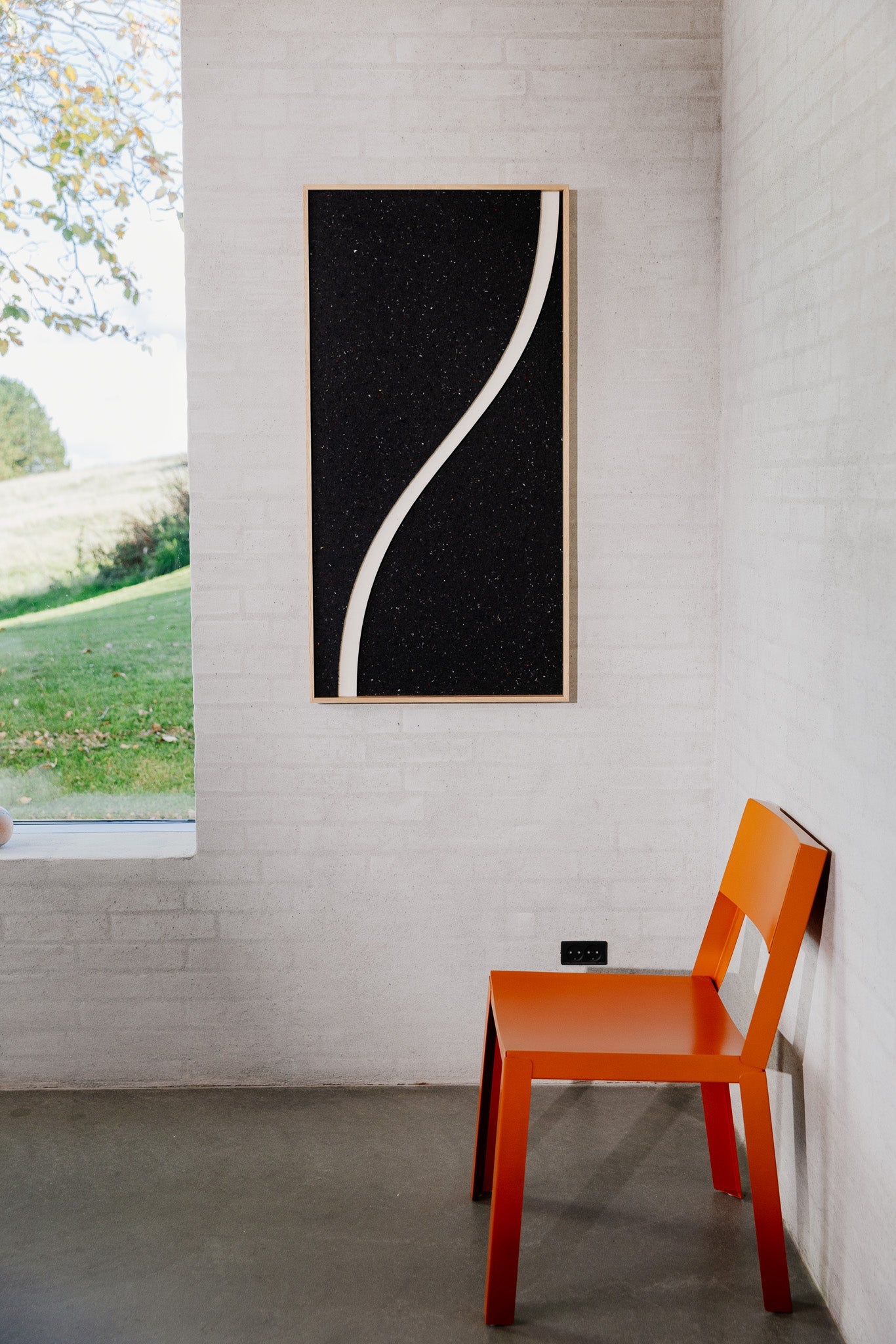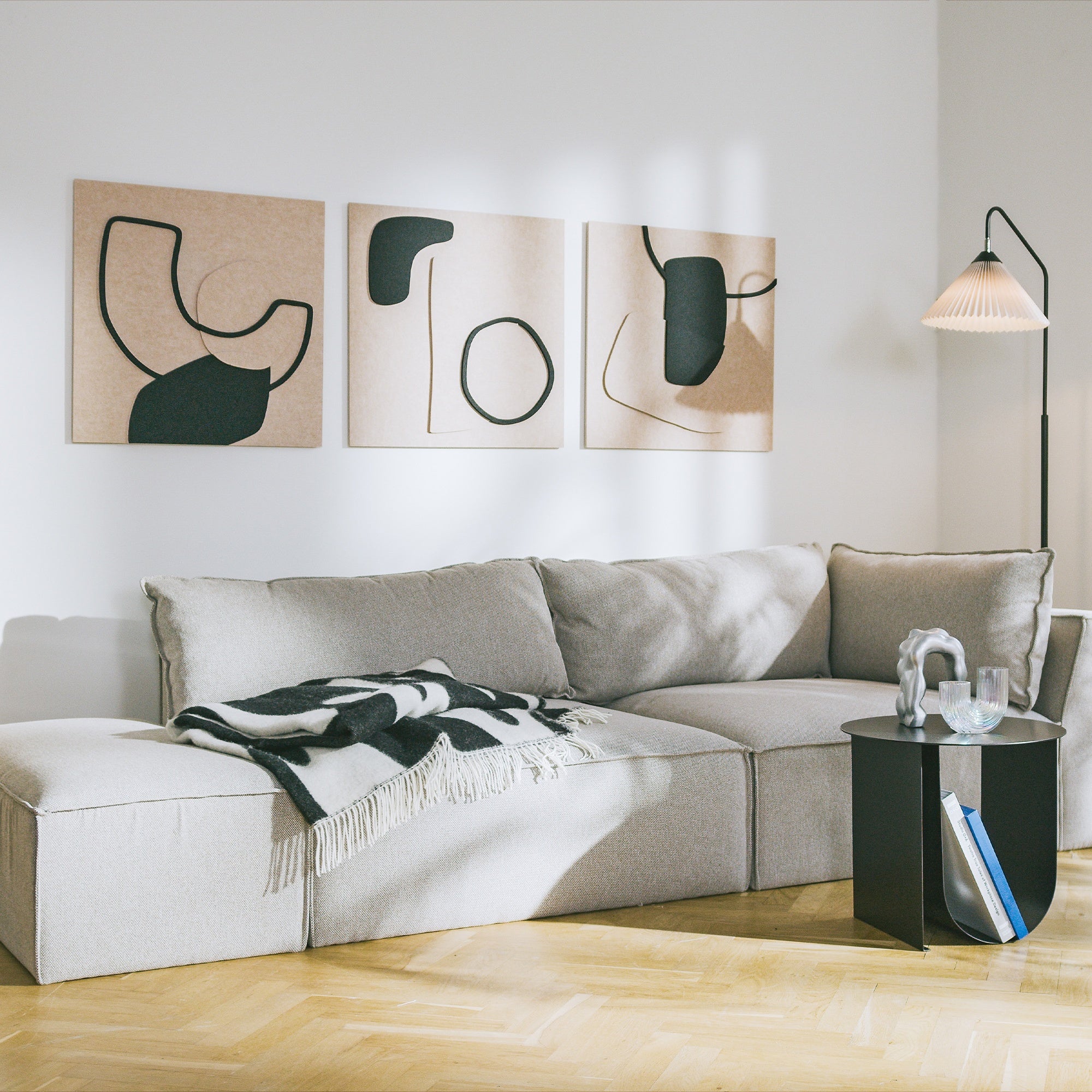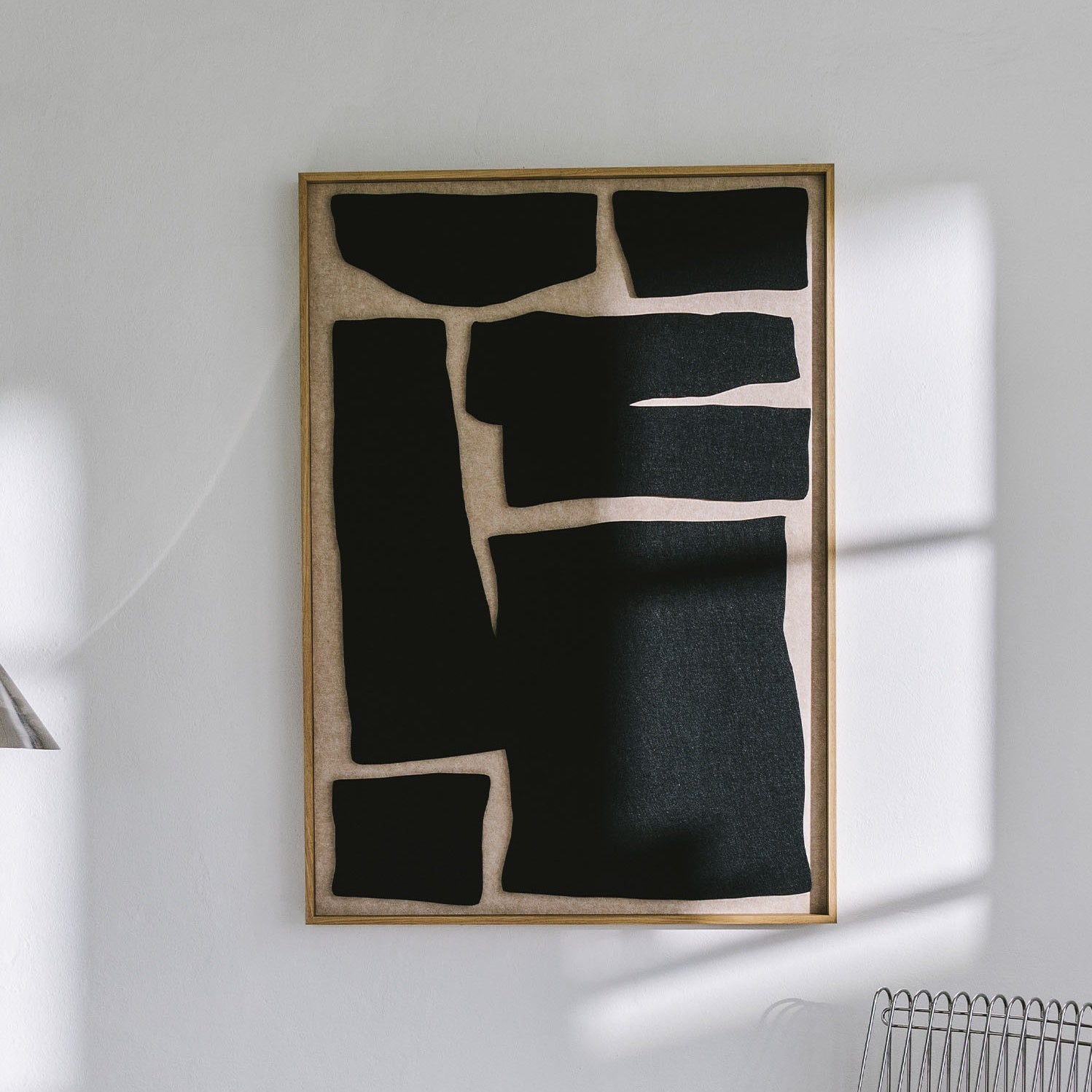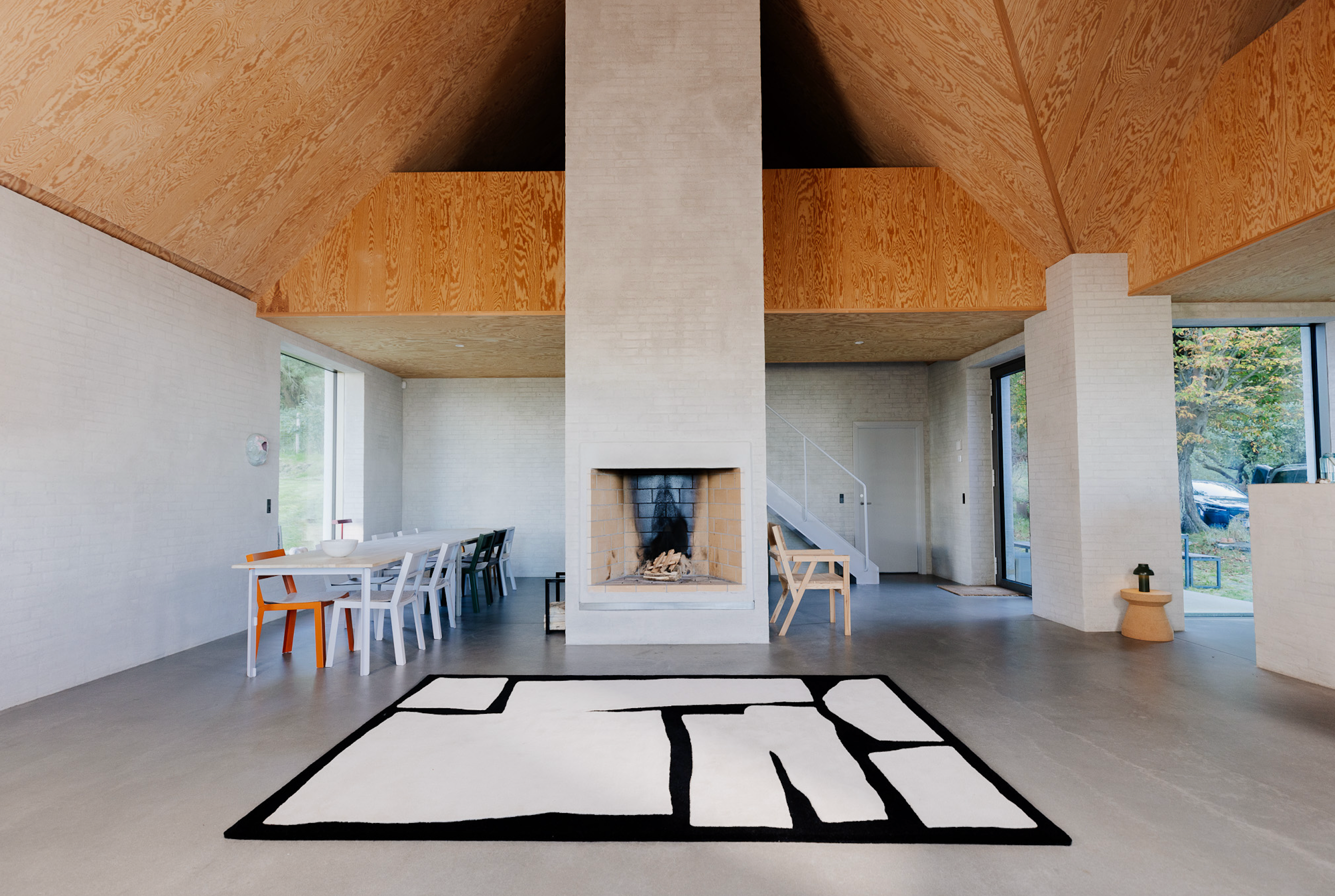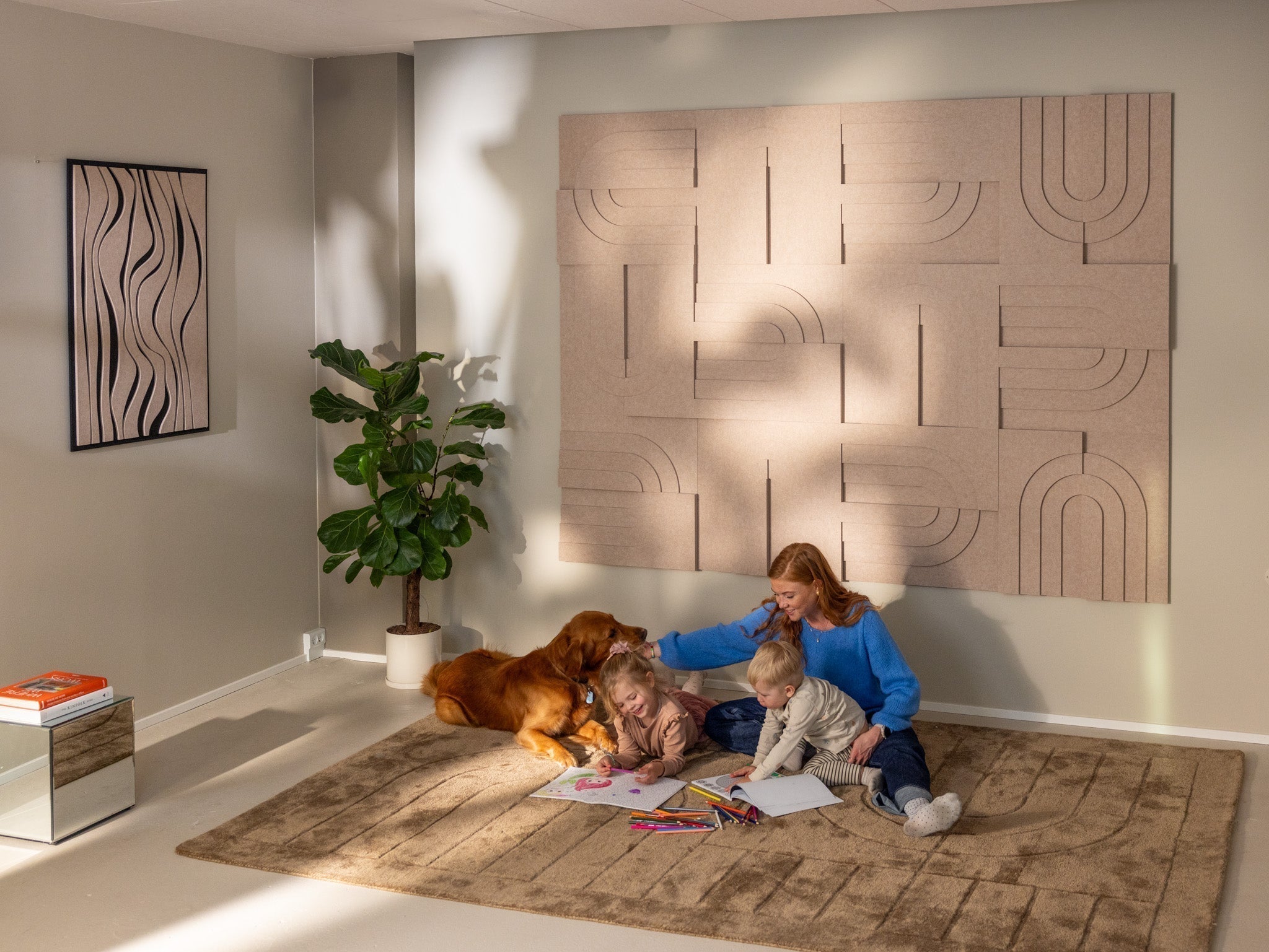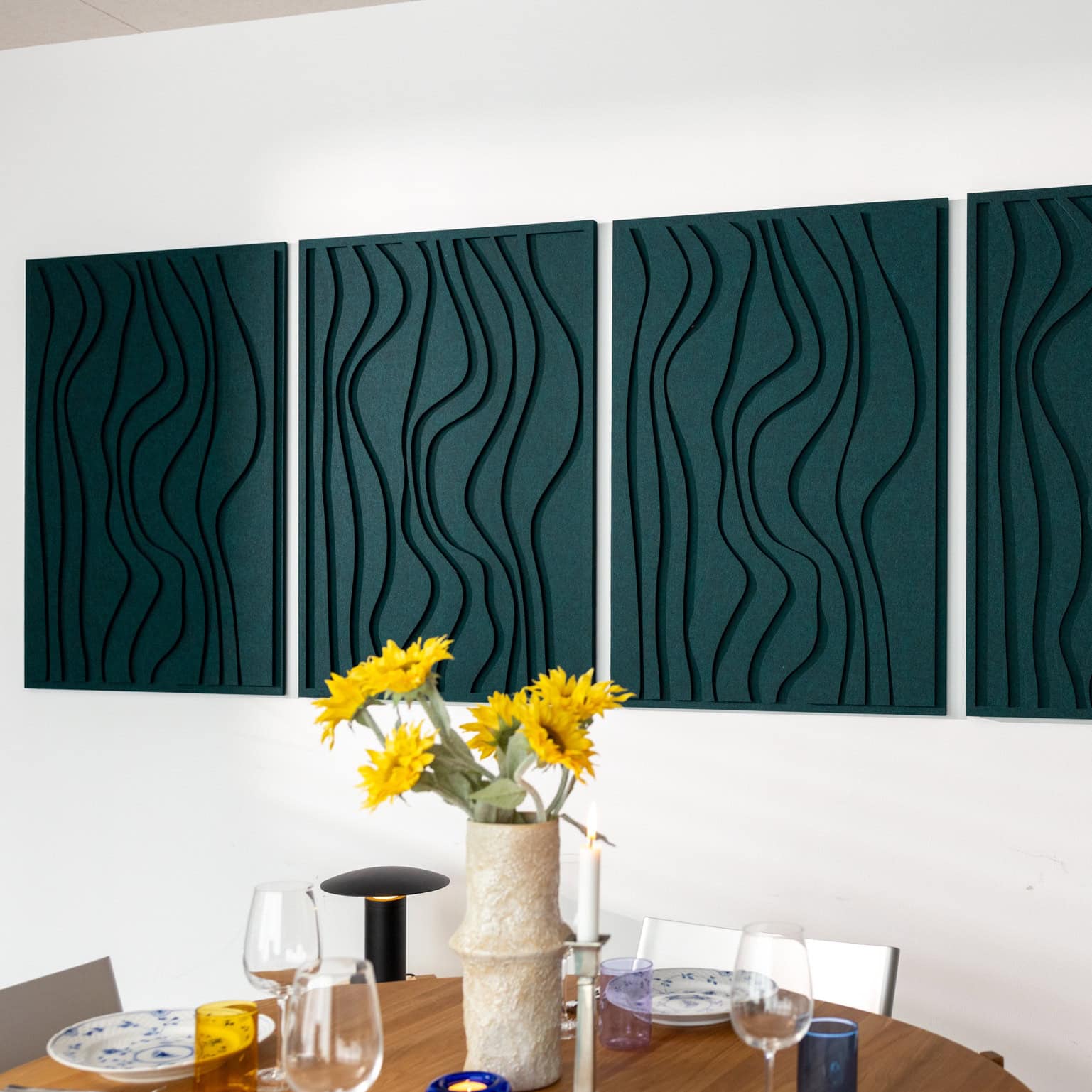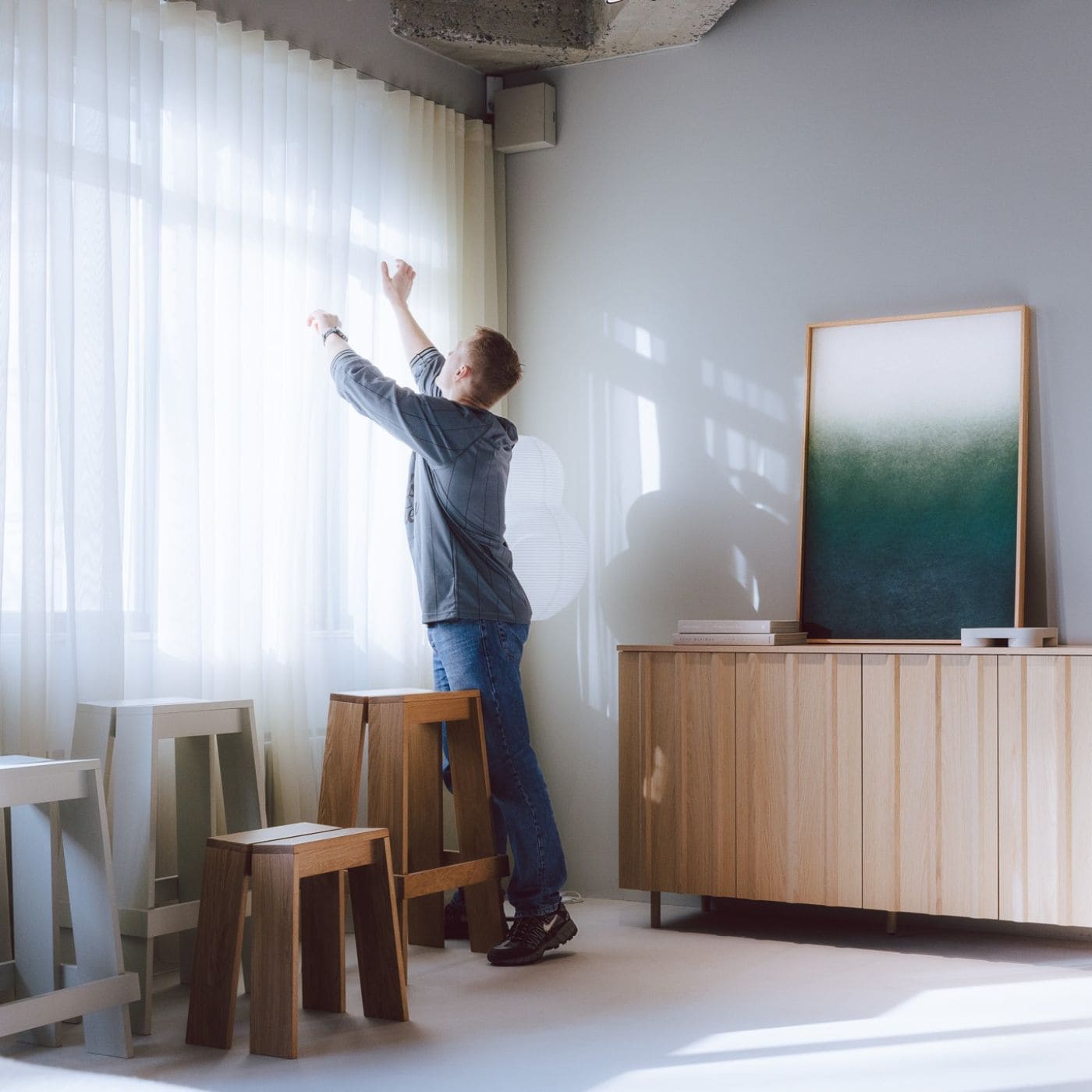
What makes modern art modern today? From Danish design to acoustic innovation
Is it the ability to break away from tradition? Or perhaps its connection to the world we live in today? Modern art is more than a style—it’s a conversation. A dialogue between the past and the present, the functional and the beautiful. But how do we define what makes art truly modern?
What Does “Modern” Mean Today?
The term “modern art” is often misunderstood, with many associating it solely with the modernist movement of the early 20th century. However, modern art today encompasses originality, innovation, and functionality. It transforms spaces and perceptions, whether through original modern art pieces or modern acoustic panels that combine form and function.
Modern art in the 21st century goes beyond breaking artistic traditions since it embraces the integration of technology, sustainability, and practical applications. As a result, it resonates with contemporary audiences looking for both aesthetic and functional solutions in their environments.
What Is Modern Art Originally?
Modern art began as a bold departure from classical art conventions. Emerging in the late 19th century, it embraced experimentation with form, color, and perspective. Artists such as Picasso and Kandinsky defied norms, paving the way for self-expression and abstraction. This era birthed unique modern art, where innovation became the focal point.

A reflection of modern acoustic art and design today
Today, while the original modernist movement has ended, its legacy inspires contemporary creators who reinterpret its principles. Arturel channels this spirit into its modern acoustic panels, merging artistic ingenuity with practical sound solutions.
Are Modern Art and Contemporary Art the Same?
Although often conflated, modern art and contemporary art differ significantly. Modern art refers to a specific historical period spanning the late 19th century to the 1970s. This era was defined by bold experimentation and a break from tradition, with movements such as Cubism and Surrealism challenging how art was created and perceived. Contemporary art, in contrast, reflects current cultural, social, and technological contexts, often addressing pressing issues like sustainability and digital innovation.

A showcase of modern acoustic panels from Arturel X Mandalaki
Arturel’s modern acoustic panels, such as the Wave Collection or the Mandalaki collection involving lights, exemplify how contemporary art evolves by integrating technology and sustainability. These panels serve as both sound absorbers and visual statements, embodying the best of today’s artistic practices. By blending practical utility with artistic design, they redefine how we experience modern spaces, showcasing that contemporary art is as much about function as it is about form.
Contemporary Acoustic Art as the New Modern Art
Functionality has become a defining feature of contemporary art, making acoustic art a natural evolution of modern art. By addressing real-world needs like sound absorption, modern acoustic panels elevate spaces aesthetically and functionally. Collections like Royal Guard tell a story of heritage while providing practical benefits.

Hats & Pants from Arturel's Royal Guard collection
Unlike traditional art forms that prioritize visual appeal alone, acoustic art contributes to well-being by enhancing acoustics and reducing noise pollution in everyday environments. This type of art not only improves sound quality but also transforms the way we experience our surroundings by creating a sense of calm and balance.
The innovative approach to acoustic art merges advanced materials with meticulous design, ensuring each piece serves as both a sound solution and a striking visual element. Found in homes, offices, and public spaces, these panels effectively balance aesthetic appeal with practical functionality. Explore more about their impact in our blog Do Soundproofing Panels Work?.
Danish Modern Art - A Legacy of Creativity
Denmark’s contribution to modern art and design is globally renowned. Danish modern art is characterized by clean lines, minimalist aesthetics, and functionality. These values continue to shape Arturel’s collections, including the Nordic Bauhaus, which blends Scandinavian design with contemporary needs.

Minimalistic modern art i Nordic Bauhaus design
Acoustic panels can be an extension of this legacy, marrying timeless design with cutting-edge sustainability. By incorporating recycled materials, these pieces shows the commitment to eco-conscious innovation while enriching interiors with danish artwork that is both stylish and functional.
When Art Becomes Functional with Modern Acoustic Panels
Functional art bridges the gap between aesthetics and utility, and modern acoustic panels exemplify this union. Designs such as the Geometric Collection, reduce noise while acting as striking focal points. These panels are ideal for spaces where form and function must coexist harmoniously.

Geometric modern art in form of Arturel's Geometric collection
Recent studies on innovative acoustic materials highlight the potential of recycled textiles, such as denim, to enhance both sound absorption and environmental sustainability. This dual functionality showcases how acoustic art evolves with contemporary needs
Acoustic panels like Arturel’s demonstrate how art can transform environments. Beyond their technical benefits, they enhance the ambiance and visual appeal of a room. For insights into how acoustic design improves spaces, visit our blog Understanding Echoes and Room Acoustics.
How to Choose the Perfect Modern Art for Your Space
Selecting the right modern art for your space involves a thoughtful balance between aesthetics and functionality. Whether you’re looking to enhance the acoustics in a room or create a stunning visual statement, these considerations can guide your choice:
-
Purpose: Define the primary goal for the piece. Is it purely decorative, or does it need to serve a functional role like reducing noise? For rooms prone to echoes or sound disturbances, prioritizing art pieces with acoustic properties, such as high Noise Reduction Coefficient (NRC) ratings, ensures both beauty and practicality.
-
Room Type and Size: Consider the dimensions and purpose of the room. Larger spaces, such as open offices or living rooms, may require multiple panels strategically placed to optimize sound absorption. Smaller rooms may benefit from compact designs that complement the scale without overwhelming the space.
-
Design and Theme: Align the artwork’s style with your interior design. Minimalist interiors may pair well with the subtle curves of the Arch Collection, while more dynamic spaces could benefit from geometric or colorful patterns.
-
Material and Sustainability: Look for eco-conscious designs crafted from recycled materials, contributing to a sustainable and ethical home. Panels made from upcycled textiles not only reduce waste but also add a layer of environmental responsibility to your decor.
-
Acoustic Performance: Evaluate the NRC value of the panels to ensure effective sound absorption. For rooms with significant sound challenges, a higher NRC rating indicates better noise control. Research how many panels are needed to achieve the desired acoustic effect based on the room’s size and layout.
By carefully considering these factors, you can select pieces that enhance both the visual and auditory environment of your space, creating a cohesive and impactful design.
Why Arturel Is Redefining Modern Art
Arturel’s innovative approach to new modern art merges Danish design heritage with contemporary demands. Collections like Royal Guard and Wave exemplify how art can transcend aesthetic boundaries to provide practical benefits.
By prioritizing sustainability and functionality, we transforms unique modern art into solutions that enhance both spaces and lives. These acoustic panels are more than just decorative—they represent a new standard in modern artistic innovation.
Explore Arturel’s collections today to discover how modern acoustic panels can transform your space. From functional beauty to timeless Danish craftsmanship, Arturel redefines what modern art can achieve.




